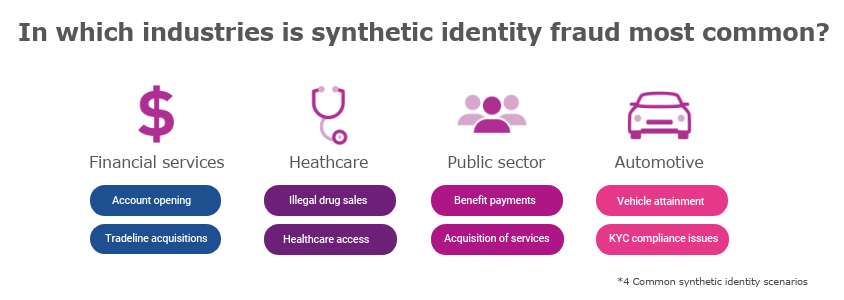
Synthetic identity theft and fraud
Reduce exposure to identity fraud through early detection.
Synthetic identities are made to look like real customers with good credit scores and histories, but are fabricated by fraudsters to perpetrate fraud. These identities are generally based on a Social Security number (SSN), or a credit privacy number (CPN). They are made up of blended information which combines real and fake data such as an address from one person mixed with another’s SSN or CPN. Synthetic identity theft is often difficult to spot because there is not a victim reporting the activity right away because of the nature of how they are created. The rise of this identity fraud is likely due to factors such as: widespread data breaches, dark web data access and availability, EVM card enhancements, and the competitive lending landscape, which values customer experience to the point where it creates gaps in identity fraud management processes.
There are three ways in which fraudsters create synthetic identities: building a fraudulent credit profile over time through applications and inquiries, gaining access to legitimate accounts and using authorized user addition processes, and creating false credit reporting agency updates through organized and illegitimate data furnishing processes.

Read IDC's perspective paper on the effects of SID on banks and how Experian's Sure Profile can help.
Download this White Paper to learn more about this growing problem and steps to find and prevent synthetic identity fraud.
Fraud detection platform with synthetic ID high risk score, incorporates the history and past relationships between individuals to detect anomalies.
Digital device intelligence to perform link analyses to connect identities that seem otherwise separate.
Synthetic identity risk mitigation services, working with trusted and experienced Experian advisors to execute new and customized strategies.
Experience the future of underwriting with greater confidence in your application approvals and minimized portfolio risk with this enhanced credit profile.